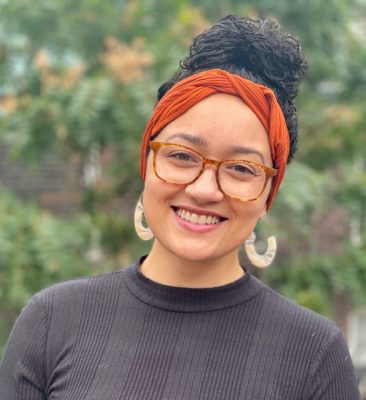Hariri Institute Graduate Student Fellow Finds a Home for Innovative Research Methods
BY ALEX JOHNSON
As computational tools become more advanced, the focus is often on the applications to science, technology, or medicine. However, computing can also be used to address social problems like homelessness, vulnerable youth populations, and gentrification. Adrianna Spindle-Jackson, a Graduate Student Fellow at the Hariri Institute, uses computational methods to address questions related to housing and at-risk youth in America.
After pursuing a Master’s degree in social work and working for an emergency housing shelter, Spindle-Jackson saw the structural problems that caused youth and families to return to facilities multiple times. She weighed her options and decided that research was the best way to combat these systemic issues, later enrolling in a PhD program in Social Work at Boston University. “I felt that research is a tool to address the barriers that my clients faced,” said Spindle-Jackson.
Spindle-Jackson uses a combination of descriptive and numerical data to study the intersection of homeless rates, at-risk youth, gentrification, and geographic location. She collects personal interviews, accesses large public data sets, and employs mapping technologies like Geographical Information Systems (GIS).
Data sets and trends provide an informative, solid basis to any research project regarding a policy or societal issue. Spindle-Jackson is currently studying how extending a state’s period of foster care assistance from 18 to 21 affects rates of youth homelessness. She has used GIS to create “hotspot maps” of areas that contain many factors associated with higher rates of homelessness. She intends to analyze this data on a national level. “I want to contribute to the existing national maps and advance the knowledge of why homelessness rates are higher in different localities, and then translate that knowledge into policy,” said Spindle-Jackson.
The complexities of national policy and social systems are not always apparent in data, so descriptive, or qualitative, methods remain important and relevant to provide a bigger picture. In a paper examining workforce development systems and kids involved in the juvenile justice system, Spindle-Jackson used interviews as a key data component. Interviews with workforce personnel highlighted the strengths and weaknesses of the system, and helped the reader to understand both how the system worked and where the system failed.

Spindle-Jackson explains that researchers can combine qualitative and quantitative data to elevate individual stories, and make stronger cases for policies that are not serving people. “I find that quantitative and qualitative methods can complement each other by adding to a story being told through research in distinct ways. Research is like a puzzle, and these distinct methods can fit together in a way that more richly brings the overall picture to light,” said Spindle-Jackson.
Such innovative, collaborative work can lead to novel research methods that address many of the more complex challenges society faces today. Spindle-Jackson states that being a Hariri Institute Graduate Student Fellow has supported this sort of research already. “The Hariri Institute’s mission to center data science work is timely, and it’s personally pushing me to expand the way that data science is presented in my own work,” said Spindle-Jackson.
Interested in learning more about the research happening at the Hariri Institute? Sign up for our newsletter here.
